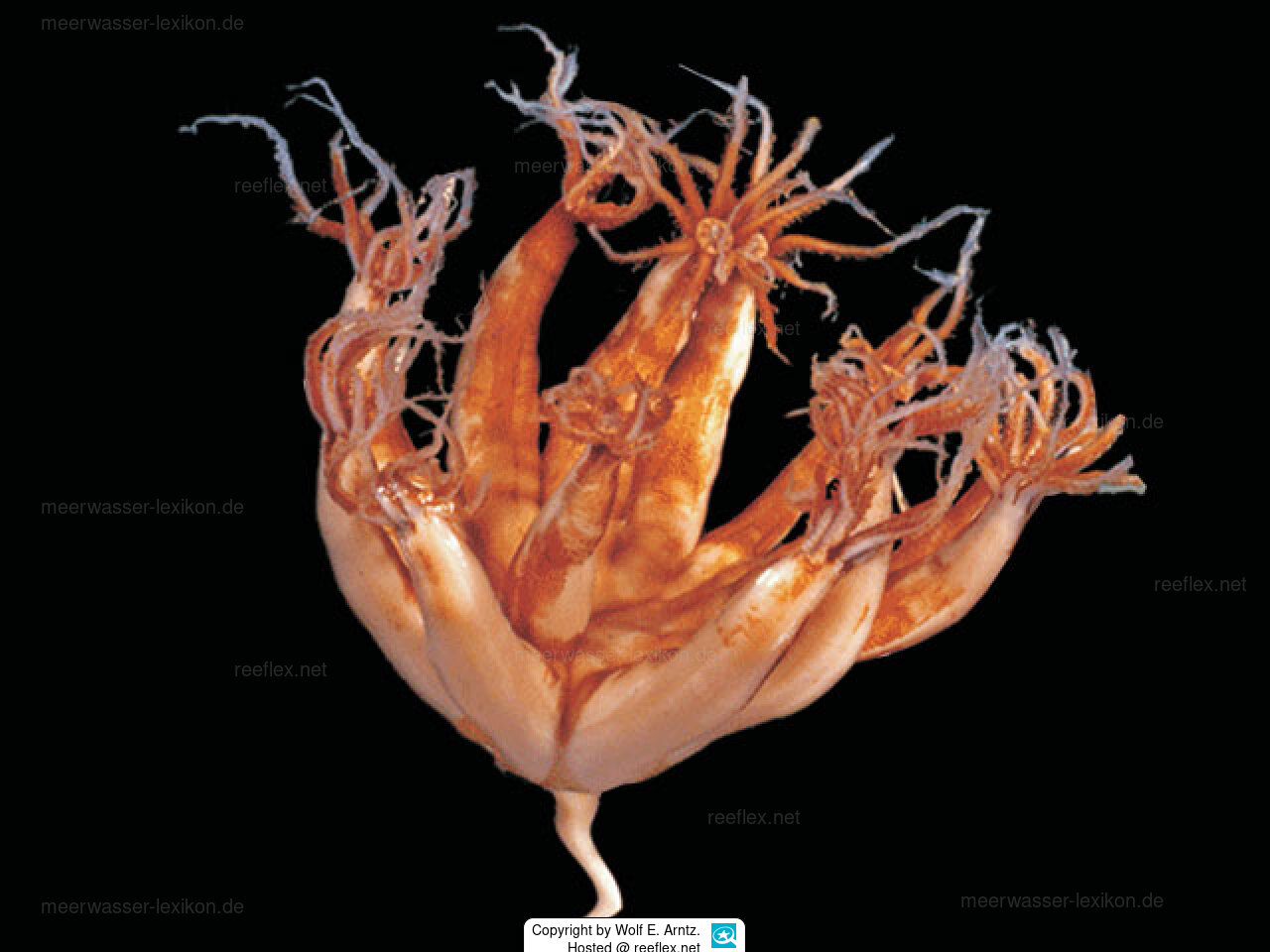Info
Pennatuloidea are one of the most distinct Anthozoa groups in the deep sea, comprising more than 200 species in 34 genera and 14 families (as of 2002).
Researchers assume that these sea feathers first differentiated in the shallow waters of the tropical oceans and then spread to all depths of the temperate and polar regions as well as the tropical seas.
The very cold and very deep Antarctic waters and their flora and fauna are still largely unknown today and are the target of repeated expeditions, during which new species are constantly being discovered.
As a rule, bottom trawls are used to bring samples to the surface from waters that are too deep and too cold for divers.
Sea pens, which are native to the nutrient-rich and largely unmanaged waters, are also repeatedly landed in the process.
Our thanks for the first photo of this sea pen go to Dr. Wolf E. Arntz.
Researchers assume that these sea feathers first differentiated in the shallow waters of the tropical oceans and then spread to all depths of the temperate and polar regions as well as the tropical seas.
The very cold and very deep Antarctic waters and their flora and fauna are still largely unknown today and are the target of repeated expeditions, during which new species are constantly being discovered.
As a rule, bottom trawls are used to bring samples to the surface from waters that are too deep and too cold for divers.
Sea pens, which are native to the nutrient-rich and largely unmanaged waters, are also repeatedly landed in the process.
Our thanks for the first photo of this sea pen go to Dr. Wolf E. Arntz.







 Prof. Dr. rer. nat. Wolf E. Arntz, Deutschland
Prof. Dr. rer. nat. Wolf E. Arntz, Deutschland


